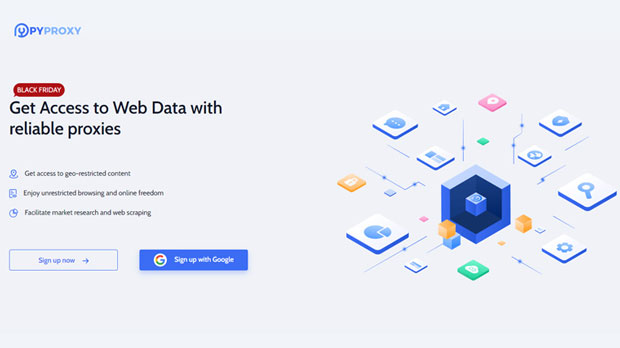Will IP proxy technology replace VPNs in the future?
The rise of ip proxy technology has sparked many discussions about its potential to replace traditional Virtual Private Networks (VPNs). As both tools serve to enhance online privacy and security, they seem to offer overlapping functionalities. However, the question remains: will IP proxy technology eventually supersede VPN in the future? This article delves into the differences between these two technologies, their respective advantages, and whether ip proxies could ultimately render VPNs obsolete. Understanding IP Proxy Technology and VPNTo better understand how these technologies work, it’s crucial to first define each term and explore their functionalities.1. IP Proxy Technology: IP proxies act as intermediaries between a user's device and the internet. When a user connects to a website, the proxy server masks the user's original IP address with its own, making it difficult for the website to trace the user's actual location. This is particularly useful for maintaining anonymity or bypassing geo-restrictions on content. IP proxies can also distribute requests across different IP addresses to manage network traffic and avoid blocks.2. Virtual Private Network (VPN): A VPN, on the other hand, encrypts the entire internet connection between the user and the server, ensuring that all data transferred is protected. VPNs provide both privacy by masking the user’s IP address and security by creating a secure tunnel for data. VPNs are commonly used by individuals who need to protect their browsing activity from hackers, surveillance, or censorship.Both technologies focus on improving privacy and security, but the key difference lies in their approach. IP proxies are mainly focused on anonymity and location masking, while VPNs prioritize encryption and secure data transfer.The Advantages of IP Proxy TechnologyAs the digital landscape continues to evolve, IP proxy technology has gained significant traction, especially with the rise of globalized internet access and increasing concerns over online privacy.1. Enhanced Anonymity: IP proxies are excellent for users who simply wish to hide their IP addresses while browsing or accessing restricted content. They do so by routing traffic through one or more proxy servers, offering users a level of anonymity, especially in less-sensitive use cases.2. Speed and Performance: Since IP proxies do not encrypt data like VPNs, they tend to offer faster speeds. This can be particularly advantageous for activities that require high bandwidth, such as streaming or online gaming. Users often experience minimal latency when using proxies, as they are generally more lightweight than VPNs.3. Cost-Effectiveness: IP proxies are often less expensive than VPN services. This is because proxies focus on changing the user's IP address and routing traffic, rather than offering full encryption and security features. For those looking for a budget-friendly solution to bypass geo-restrictions or maintain basic anonymity, IP proxies can be a cost-effective choice.4. Scalability: Proxies are more easily scalable compared to VPNs, especially in cases where businesses need to manage large-scale networks. Multiple IP addresses can be assigned to different devices and locations, helping to reduce bottlenecks and enhancing overall performance.Benefits of VPN TechnologyVPNs have long been a staple for users who need comprehensive privacy and security. While IP proxies offer various advantages, VPNs still hold several key benefits that may prevent them from being entirely replaced.1. Full Encryption: VPNs encrypt all internet traffic, providing robust protection against data breaches, hackers, and surveillance. This level of encryption ensures that sensitive information, such as login credentials, personal data, and payment details, remains secure. For anyone concerned with online security, VPNs offer a significant advantage over proxies.2. Complete Privacy Protection: VPNs not only mask a user's IP address but also provide a secure tunnel through which all data flows. This ensures that no third party, including ISPs, hackers, or even governments, can track a user's online activities. With the rise of online tracking and surveillance, VPNs offer a layer of protection that proxies cannot match.3. Access to Restricted Content: VPNs are widely used to bypass government censorship or geo-restrictions imposed by services like streaming platforms. Since VPNs route traffic through secure servers, they can help users access content from other countries without detection. This is especially important for users in regions with strict censorship laws.4. Connection Security on Public Networks: Public Wi-Fi networks, such as those in coffee shops or airports, are vulnerable to cyberattacks. VPNs create a secure, encrypted connection even when users are connected to untrusted networks, safeguarding them against data theft or man-in-the-middle attacks.The Limitations of IP ProxiesDespite their advantages, IP proxies have certain limitations that hinder their ability to fully replace VPNs for all use cases.1. Lack of Encryption: One of the most significant drawbacks of IP proxies is that they do not offer encryption. This means that while they can hide a user’s IP address, they do little to protect the data being transferred. For users looking for a secure connection, such as when shopping online or accessing sensitive information, an IP proxy is not a suitable replacement for a VPN.2. Vulnerability to Tracking: Without the encryption offered by a VPN, proxies leave users more vulnerable to advanced tracking techniques. Websites, advertisers, and other third parties may still be able to track user activity using cookies, device fingerprints, or other tracking technologies.3. Limited Use Cases: While proxies are excellent for bypassing geo-restrictions and maintaining anonymity for basic browsing, they do not offer the same level of protection for sensitive activities like online banking or accessing confidential data. In these cases, VPNs are far more appropriate due to their added layers of security.Future Outlook: Will IP Proxies Replace VPNs?Although IP proxy technology offers several benefits, it is unlikely to fully replace VPNs in the foreseeable future. Here are a few reasons why:1. Increased Need for Privacy and Security: With growing concerns about data breaches, surveillance, and cyber threats, users are increasingly prioritizing online security. VPNs provide a comprehensive solution by encrypting all internet traffic, making them a necessity for those who require enhanced protection.2. Technological Advancements: As proxy technology continues to evolve, we may see improvements in terms of security and encryption features. However, for IP proxies to truly compete with VPNs, they would need to offer the same level of encryption and secure tunneling that VPNs currently provide. Until then, VPNs will remain the preferred choice for privacy-conscious individuals.3. User Education and Trust: Many users still associate VPNs with higher levels of security and reliability. VPN services are well-established in the market, and users have come to trust them for sensitive activities. IP proxies, on the other hand, are generally perceived as less secure, and widespread adoption would require significant shifts in user behavior and perception.ConclusionIn conclusion, while IP proxy technology offers certain advantages in terms of speed, cost, and anonymity, it is unlikely to completely replace VPNs in the near future. VPNs still offer unmatched security, encryption, and privacy protection, making them the ideal choice for users seeking comprehensive online protection. However, as technology continues to evolve, it is possible that IP proxies will improve and expand their capabilities, leading to more diverse use cases in the future. For now, users should consider their specific needs and priorities when deciding between IP proxies and VPNs, as each technology serves different purposes in the online security landscape.
2025-01-23

























































